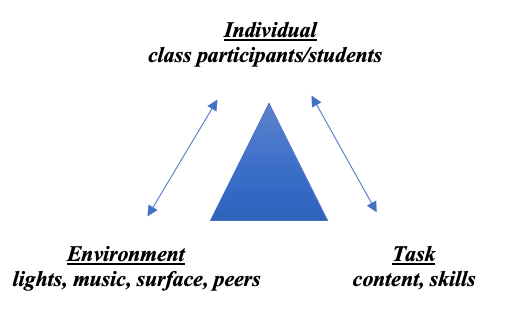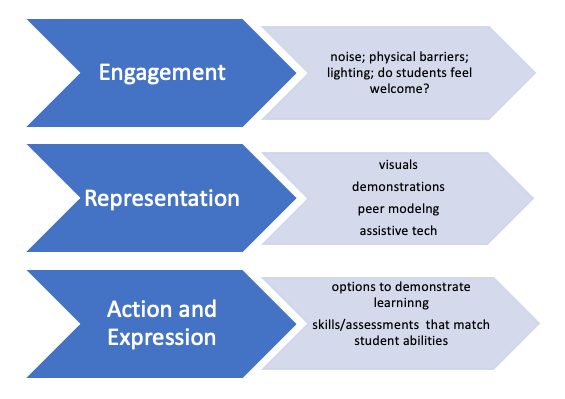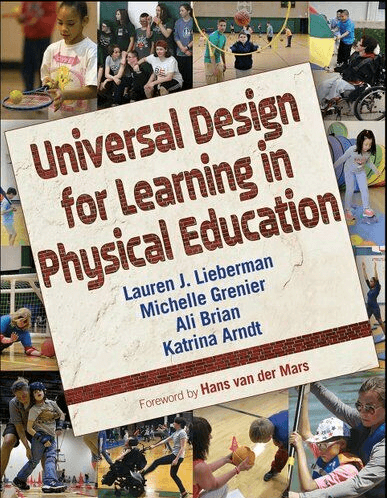
UDL is a way of thinking and acting that may change the way you approach student learning. Rather than thinking a student needs to change, UDL looks at the learning environment. Consider what within the environment is a barrier to learning. Is it that space itself? Is it the equipment you are using? Perhaps it is the way the students are expected to learn. The learning environment can include other barriers such as the goals of the class, the way assessments are conducted, or the way the students are organized. See below for a diagram that outlines an ecological analysis of the learning environment (Haywood & Getchell, 2019). When considering implementing UDL in the classroom, it is important to look at the following elements.
UDL provides a framework for implementing strategies to reduce barriers to student learning. The main way to do this is to create a learning environment where students have what they need to flexibly meet the learning goals. When developing and planning your lesson, think about the students, the classroom environment, and the task you are teaching.

Three underlying components form the basis of UDL. These include Principle 1: Multiple Means of Engagement – strategies for motivating and getting student “buy-in.” Principle 2: Multiple Means of Representation –providing flexibility in the way information is presented through instruction, and Principle 3: Multiple Means of Action & Expression – designing options that align with student learning and performance.

What does UDL look like in the gymnasium?
Universal design can be found just about anywhere in your gymnasium (Lieberman et al., 2020). For example, when students enter the gym, is there anything that prevents all students from being a part of the class? Are the doors wide enough to accommodate a chair? Can everyone sit together? Are you, as the teacher, using multiple ways to deliver instruction (verbal, visual, peer modeling) to support a variety of learning styles?

Universal Design for Learning looks different in each gymnasium, but there are commonalities. To start with, there’s always a focus on building expert learning for all. Other common elements of a UDL experience include:
- All learners knowing the goal
- Intentional, flexible options for all students to use
- Student access to resources from the start of a lesson
- Students building and internalizing their own learning (CAST, 2018).
As educators, we know that there are multiple ways students can perform a particular skill, especially given the range of abilities in any given class. Through careful planning of options that differ across students’ developmental levels and skill functionality, students may not always do the same task in the same way. But the framework for having clear goals and flexible options is consistent no matter the grade level or the content areas. Utilizing UDL supports student learning and participation across the psychomotor, affective, and cognitive domains. Removing barriers, offering choices, and options in the ways students can participate and express what they can do, will ultimately lead to better learning outcomes for our students.
Lauren and Michelle are two of four co-authors of the text Universal Design for Learning in Physical Education. For more information please contact michelle.grenier@unh.edu
References & Resources
CAST. (2018). About. Retrieved from: http://www.cast.org/our-work/about-udl.html#.WukPFdMvxME
CAST. (2018). Universal Design for Learning Guidelines version 2.2. Retrieved from http://udlguidelines.cast.org
Haywood, K.M., & Getchell, N. (2019). Life span motor development (any edition). Champaign, IL: Human Kinetics.
Lieberman, L.J., Grenier, M., Brian, A., & Arndt, K. (2020). Universal design in physical education. Champaign, IL: Human Kinetics. https://www.nchpad.org/1820/7004/Laying~the~Foundation~for~Universal~Design~for~Learning~in~Physical~Education.


